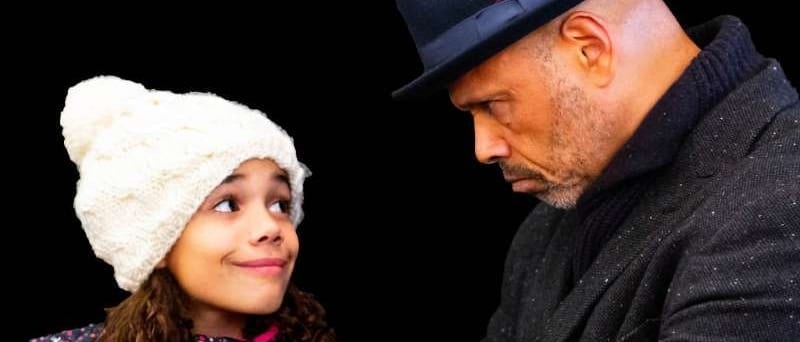Revamping classics and infusing them with a personal, accessible flair is what the Classical Theatre of Harlem does – it’s all in the name. And much like the company’s summer series, where the likes of Antigone and The Bacchae are staged with a uniquely modern perspective (incorporating the Black Lives Matter movement as a central theme, for example), this Christmas Carol is one that exists as easily in 21st-century Harlem as in Victorian London.
In this adaptation of Charles Dickens’s classic Christmas story, what haunts our Ebenezer Scrooge is even spookier than the spirits that whisk him from his bedroom: gentrification, and the exploitation of Harlem, cast a very real gloom on an otherwise upbeat show. Scrooge owns a real-estate company called, optimistically, “This Could Be Your Home.” A misleading name, as the company is instrumental in converting generational homes of Harlem into temporarily rented apartments. The citizens of Harlem are being pushed out of their homes, and those who stay are forced to live paycheck to paycheck, rent check to rent check. Nevertheless, the people of Harlem are filling the streets with Christmas cheer and the indomitable spirit of community.
Naturally, this doesn’t please Ebenezer Scrooge, who becomes progressively more of a humbug as songs fill the streets. Played by Charles Bernard Murray with a ferociously gruff temper, he is an especially short-tempered man – the mere mention of government welfare or community outreach is enough to make him sputter with disbelief. At the sight of Tiny Timothia (the adorable and talented Emery Jones) busking on the street, Scrooge treats the ever-smiling young girl to a rant about free handouts and the value of a hard day’s work.
But even Scrooge’s self-righteousness falters when he comes up against Sierra Jones (Ure Egbuho), a community organizer who walks into his shop on Christmas Eve looking to collaborate on an outreach project. Maybe it’s her fiery response to him, or the shivering of Bob Cratchit (a very upbeat and enjoyable Jeffrey Rashad), that help to conjure the ghosts that visit him that night.
The Ghost of Christmas Past (Eryn Barnes) manifests wearing leggings, sporting a 1970s afro, and cartwheeling as smoothly as she speaks. The Ghost of Christmas Present (Andrei Pierre) is not so nice – accompanied by an entourage of backup dancers at all times, he has nothing but accusing glares and harsh tones for Scrooge. And the Ghost of Christmas Yet-To-Come (Khalil X Daniel, who also did the musical direction for the production) has the bleakest message of all, directing doom around him like a dark maestro. Rather than sickly Dickensian urchins, he reveals to Scrooge not just the souls pushed out of their homes by his greed, but the historic and groundbreaking culture of Harlem that will die if, say, the demand for Whole Foods increases.
Tiffany Rea-Fisher’s choreography stands out as one of the strongest elements of the production, along with the musical numbers which light up past, present, and future Christmases. In a clever narrative move, Bob Cratchit is collapsed with the character of Scrooge’s nephew, the only child of his beloved sister, and Scrooge’s only living family. So when Scrooge’s childhood memories remind him of the importance of family, the story is all the stronger for the solution waiting at the end of the story: a reformed Scrooge, repentant and ready to pay it forward, showing up on Christmas Day to make amends with the Cratchits in every way he can think of. In terms of family and community love, and with plenty of holiday cheer, Christmas has truly come to the capital of New York in A Christmas Carol in Harlem.

